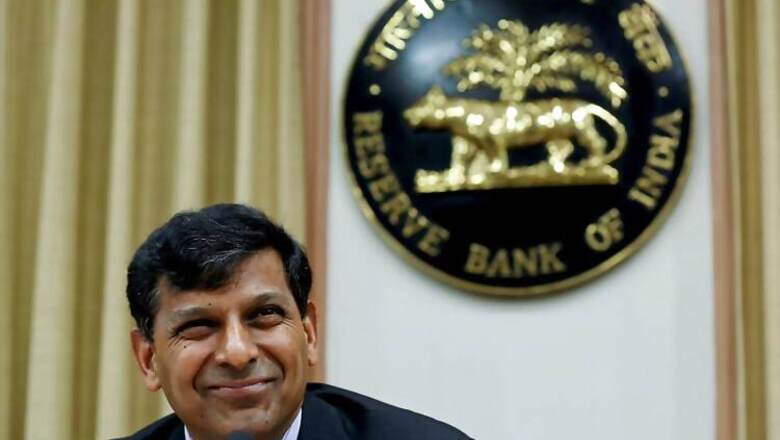
views
New Delhi: Exceeding everyone's expectations, Reserve Bank Governor Raghuram Rajan on Tuesday cut repo rate by 50 basis points to four-year low of 6.75 per cent. The cash reserve ratio (CRR) has been kept unchanged at 4 per cent.
With the cut in the repo rate, EMIs are expected to come down as RBI has cut lending rate to banks. "We will work to remove hurdles so that banks can pass rate cuts," Rajan said in the fourth bi-monthly review of the monetary policy in the current fiscal.
Rajan has made it clear that it wasn't a Diwali bonus. "Today's 0.5 per cent rate cut based on progress on the ground; It's not any Diwali bonus," said Rajan.
Consequently, the reverse repo rate adjusted to 5.75 per cent, and the marginal standing facility (MSF) rate and the Bank Rate to 7.75 per cent.
The RBI has given indications that there is room for more rate cuts. "Further monetary policy accommodation will be conditioned by the abating of recent inflationary pressures, the full monsoon outturn, possible Federal Reserve actions and greater transmission of its front-loaded past actions," said Rajan.
The central bank cut the GDP forecast to 7.4 per cent for the current fiscal to 7.6 per cent while projecting retail inflation at 5.8 per cent for January 2016.
The RBI has set the inflation rate for financial year 2017 at 4 per cent.
Rajan also made it clear the 7th Pay Commission will act as a fiscal stimulus. The Seventh Pay Commission's recommendations will be implemented from January 1, 2016.
In a bid to give boost to housing sector, the RBI proposed to reduce the risk weights on affordable housing applicable to lower value but well collateralised individual housing loans. At present, the minimum risk weight applicable on individual housing loans is 50 per cent, it said.
This is the fourth policy rate cut by Rajan in 2015, and takes up the cumulative rate cuts to 1.25 per cent. The RBI has been under pressure from various quarters to give a fillip to the sagging growth by a rate cut, and itself acknowledged the need to do so when it cut its growth projection by 0.2 per cent to 7.4 per cent for the fiscal.
"Continuing policy implementation, structural reforms and corporate actions leading to higher productivity will be the primary impetus for sustainable growth," Rajan said.
Apart from the rate action, Rajan introduced a slew of actions on the financial markets front, starting with setting the foreign portfolio investment limits in rupee terms, rather than in dollars.
















Comments
0 comment